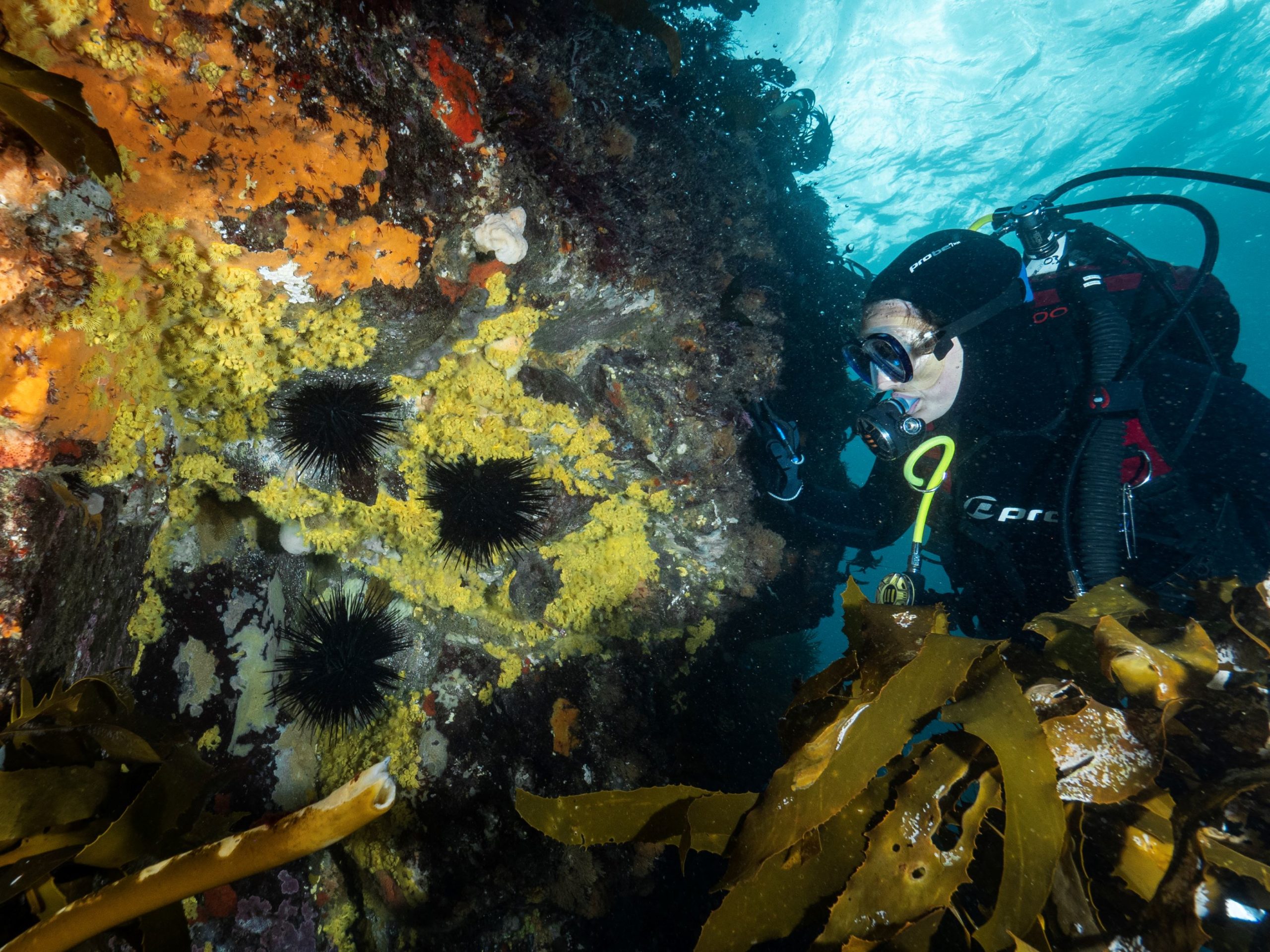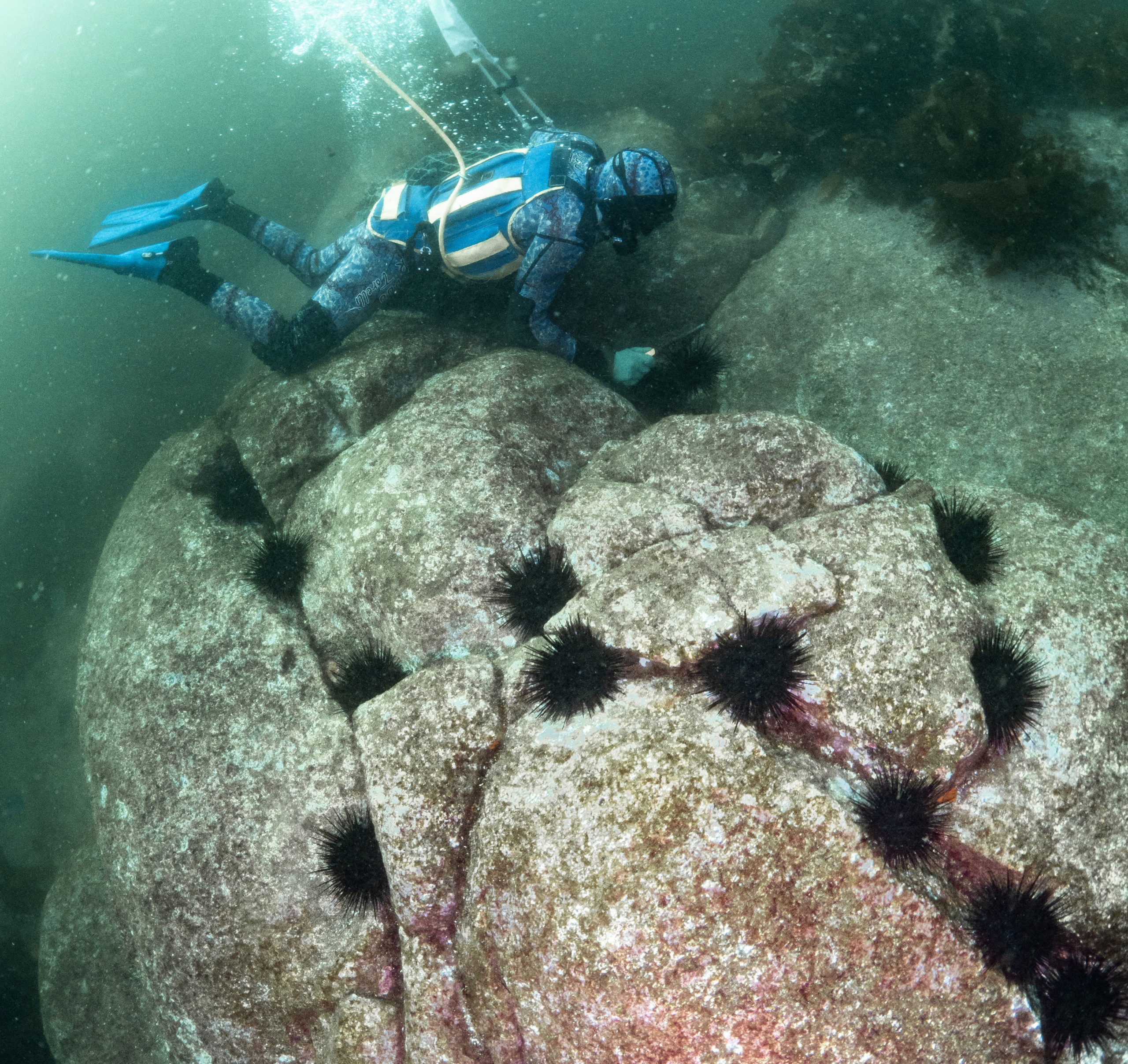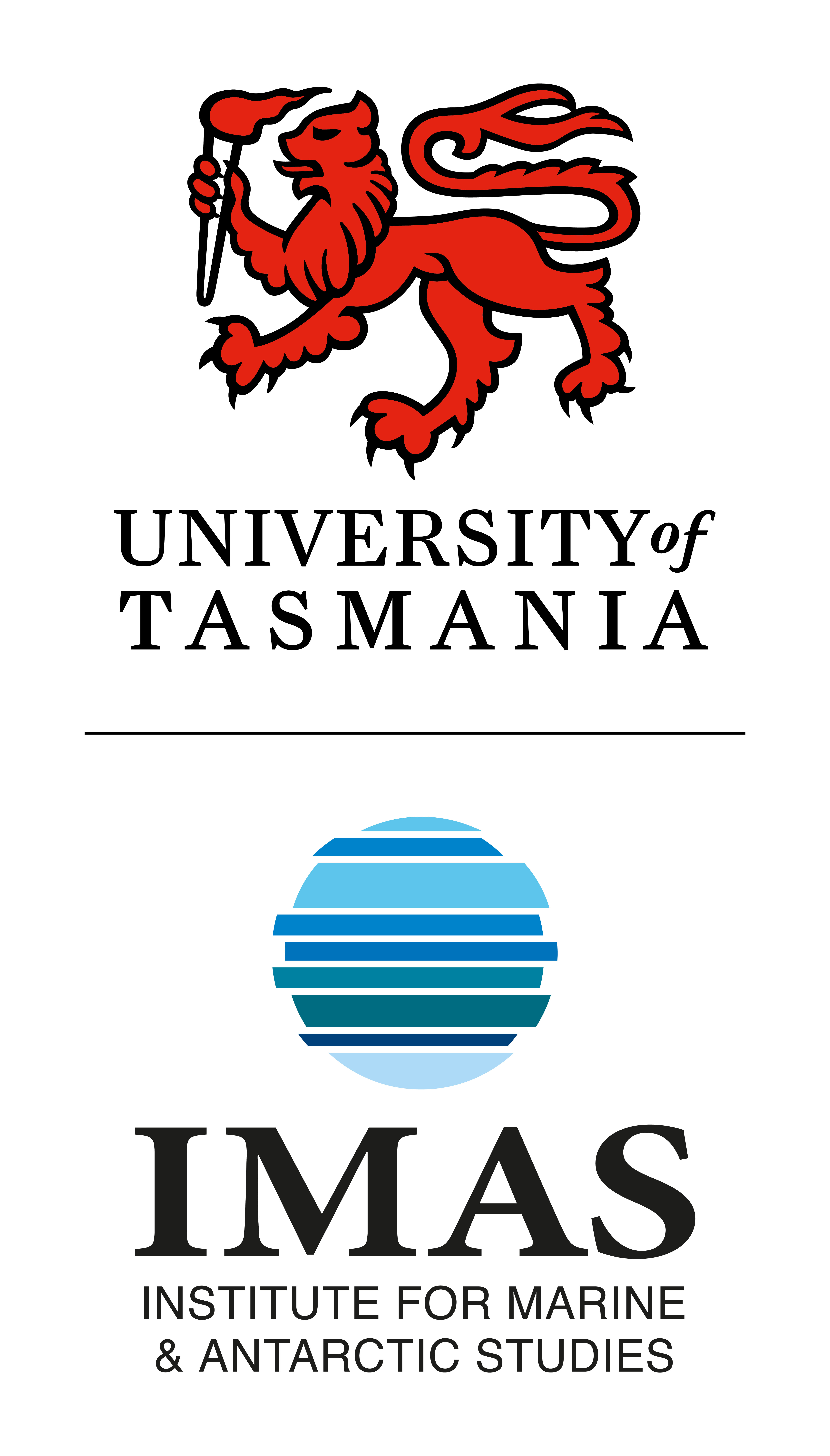Longspined Sea Urchin
luwanuma (Sea Urchin)
In palawa kani, the language of Tasmanian Aborigines, with thanks to the Tasmanian Aboriginal Centre.
Centrostephanus rodgersii (Longspined Sea Urchin or Centro)

Credit: Matt Testoni
Longspined sea urchin were not traditionally found in Tasmania’s cold temperate waters, but rather the species is believed to have undergone a climate change induced range expansion from the warm temperate waters of New South Wales. Longspined sea urchin was officially first reported on the northeast coast of Tasmania in 1978, however, surveys and studies suggests the initial establishment of this species occurred in Bass Straight in the mid 1960s. Since then, populations have expanded in Tasmania, being most abundant in the north but occurring with increasing abundance between Eddystone Point in the north and Recherche Bay in the south.
Longspined sea urchin has been harvested commercially in Tasmania since 2009. The annual catch remained low (below 100 tonnes), for the first 10 years of the fishery but has increased fivefold over the last 4 years. The catch in the 20/21 year was 497 tonnes. This emerging fishery has expanded to be the third largest in Tasmania per wet tonnage harvested. Despite the increase in catch over the last few years, there is no evidence of widespread decrease in biomass as catch rates have remained stable except in the most heavily fished area of Sloop Reef in the northeast.
The increasing biomass of longspined sea urchin and the subsequent grazing pressure of this species on kelp forests leads to the establishment of barrens where rocky reefs are reduced to bare rock. Given that this species is not traditionally found in Tasmanian waters and has a negative impact on the ecosystem, a depleting status for the fishery may be desired.

Credit: Matt Testoni
A pdf of the 2021-2022 Tasmanian Longspined Sea Urchin Fishery Assessment is available here:




Social and Economic Indicators